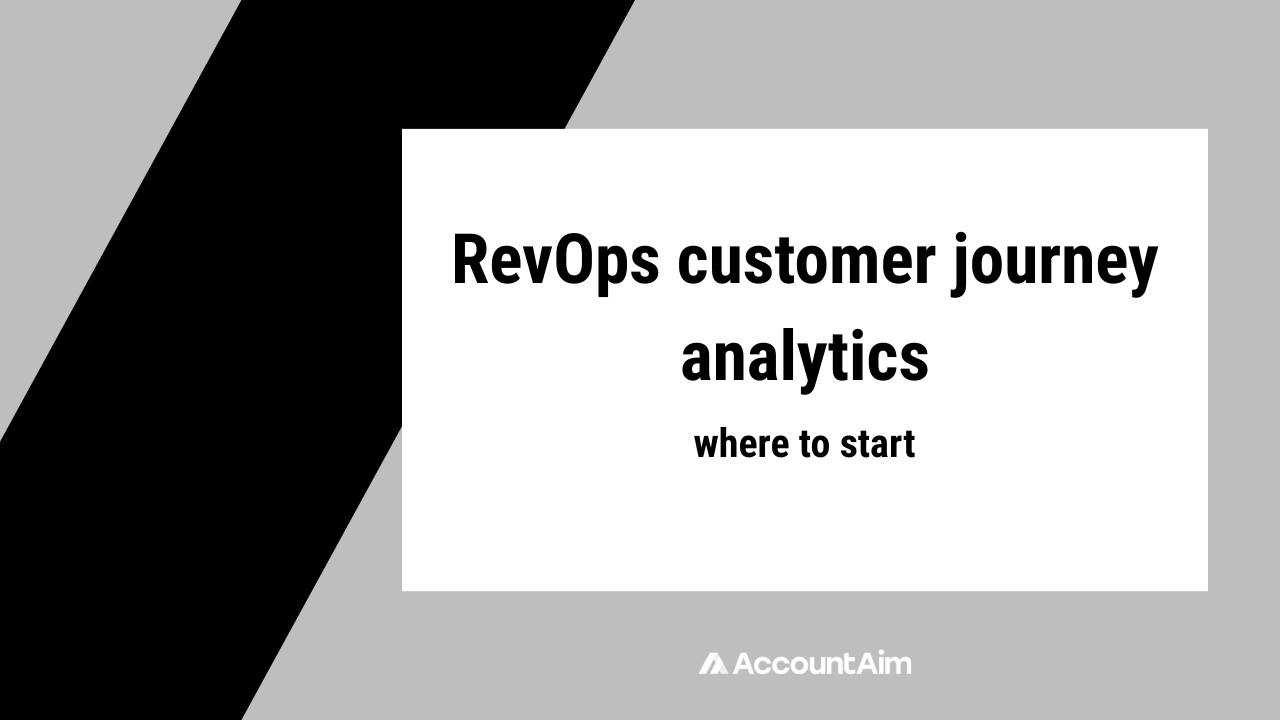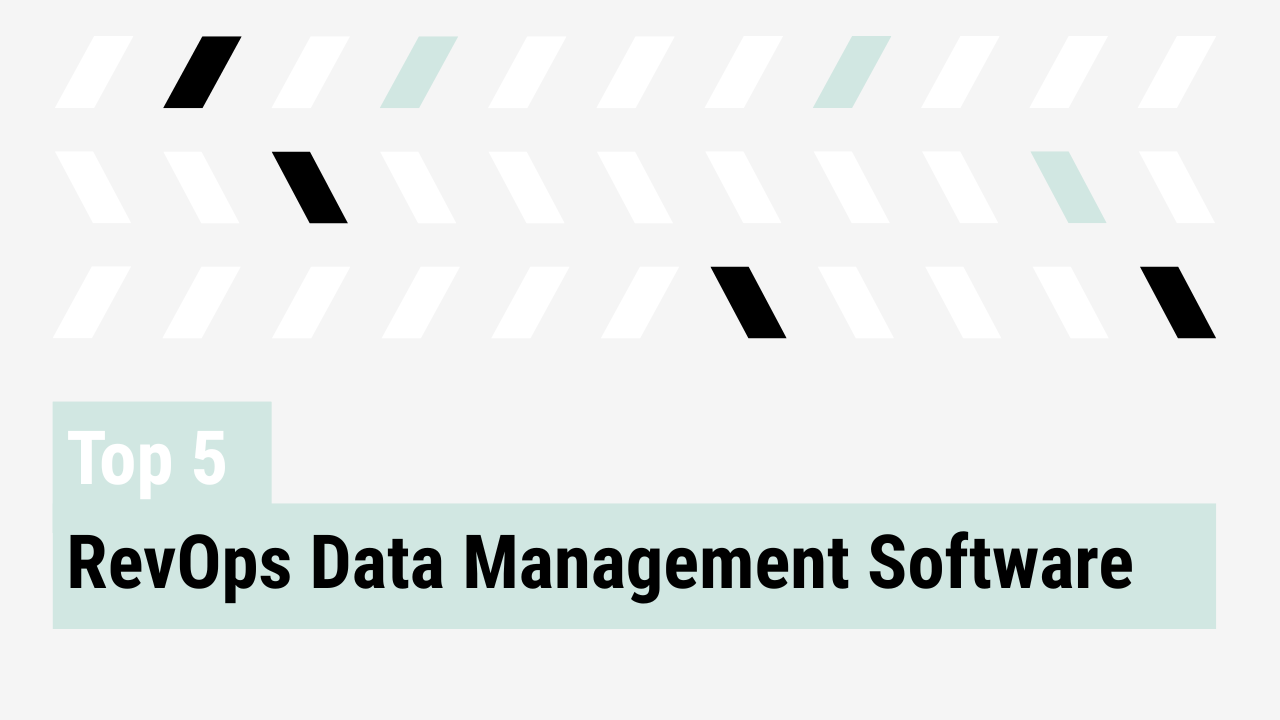B2B buying is messy, and leadership needs crisp, trustworthy insight across the full journey. If you are building RevOps customer journey analytics, use this starting plan and the core metrics that matter.
“I think about RevOps as the systems, the processes and tools that enable a team to facilitate the most effective customer journey.” -Lexi Bohonnon, CRO at Roam
Define the journey you will measure
Approach this as an operator who owns revenue from end to end. Anchor your analysis at the account level rather than chasing isolated leads, because in complex B2B, decisions are made by committees not individuals. Map the full buying group, articulate the critical milestones from the first buying signal through expansion, and catalogue the systems (CRM, MAP, CS platform, and product analytics) that hold those signals.
From there, design your instrumentation with discipline: keep sales stages intentionally few and rigorously enforced, set explicit SLAs for every handoff, and maintain airtight UTM hygiene so attribution and stage progression data is accurate and defensible.
Start with the foundational metrics
These are the levers RevOps and GTM leaders use to make decisions, and each directly informs how effectively you can analyze and improve the customer journey. They reveal how fast prospects move, where they stall, how responsive your team is, the efficiency of your go-to-market spend, and the health of post-sale relationships, all of which are essential to understanding and optimizing every stage of the journey:
- Pipeline velocity equals opportunities times win rate times average deal size, divided by sales cycle.
- Stage to stage conversion and win rate. Add guardrails for small samples.
- Speed to lead and response quality. Measure at the exact handoff.
- CAC and payback. Tie spend and conversion to time to money.
- Post sale health. Activation, adoption, GRR and NRR, plus early warning signals in customer health.
These metrics are foundational to customer journey analytics because they give RevOps leaders the ability to quantify how effectively prospects progress, identify exactly where and why deals stall, and measure the impact of engagement quality at each touchpoint. They connect tactical execution to strategic revenue outcomes, allowing leaders to correlate spend and activity with velocity, conversion, and retention. Without this baseline, any attempt to optimize the journey becomes guesswork, and these numbers transform anecdotal impressions into concrete, trackable insights.
Methods that surface friction and impact
Before you can truly map and optimize a customer journey, you need analytical methods that illuminate where friction exists and what impact each stage has on progression. These methods are your diagnostic toolkit: they help you see beyond the surface metrics to understand the hidden patterns, bottlenecks, and accelerators shaping the customer experience. Without them, your journey map is static; with them, it becomes a living, evolving asset that drives strategic action.
- Snapshots and trends. Weekly snapshots catch drift you miss in static dashboards.
- Cohort analysis. Follow cohorts by segment or product to isolate adoption and payback patterns.
- Path analysis. Trace common sequences and drop offs across channels to find friction.
- Prioritize by business impact.
“One of my favorite devices is the Eisenhower Matrix, and another is always asking the question, what is the business impact?” -Adam Beebe, Director of RevOps Strategy at Domestique
Establish a unified data foundation
This is the year to elevate your data infrastructure from a tactical necessity to a strategic advantage. Use this moment to overhaul data collection with precision, eliminate duplicate identities that erode trust in your metrics, and formalize event governance as a non‑negotiable discipline. As a RevOps leader, standardizing account and contact identifiers across CRM, MAP, CS, and product systems ensures that every touchpoint is attributable and every report tells a single, consistent story.
Document your event definitions like you would a revenue playbook, and enforce them relentlessly in pipelines so that customer journey analytics rests on an unshakable foundation.
Practical checklist
- Audit consent, web events, and offline uploads
- Standardize identities for accounts and contacts
- Version and govern your event schema
Operationalizing with AccountAim
Unify data, keep teams operating where they work best. As a RevOps leader, you know that fragmented tools and data silos slow decision‑making and create blind spots in the customer journey. By normalizing event attribution and follow‑up workflows, calculating speed to lead with precision, and writing back to CRM, you eliminate context switching and ensure every touchpoint is captured in sequence. This unified view lets you see the journey as it truly unfolds.
Run revenue‑grade reviews with confidence. Deliver weekly snapshots of pipeline coverage, stage conversion, cohort health, and ARR waterfalls that leadership can trust (without the drag of manual exports) so your reviews focus on diagnosing bottlenecks, confirming progress, and prioritizing interventions that improve journey flow.
Prove the commercial impact. At Mosaic, this approach drove 23 percent higher opportunity creation from AccountAim‑recommended accounts, saved SDRs one to two hours per day, improved data quality by 35 percent plus, and generated 1.9 million dollars in incremental pipeline. These are tangible revenue outcomes that stem directly from understanding, measuring, and optimizing the customer journey with operational excellence.
Bringing it all together
Strategic RevOps leaders measure the metrics that truly move revenue and review weekly snapshots at the account level to keep a constant pulse on progression. With AccountAim powering these insights, you’re actively steering the customer journey. Operationalizing this data turns the journey from a static diagram into a living decision engine, where every stage is measurable, actionable, and tied directly to growth.



